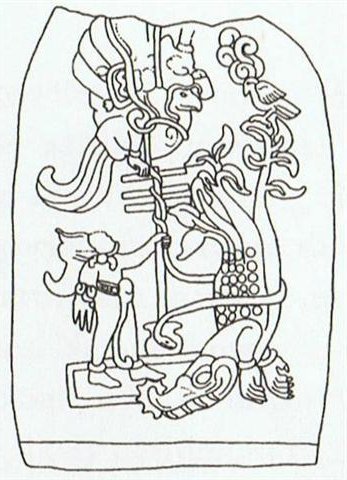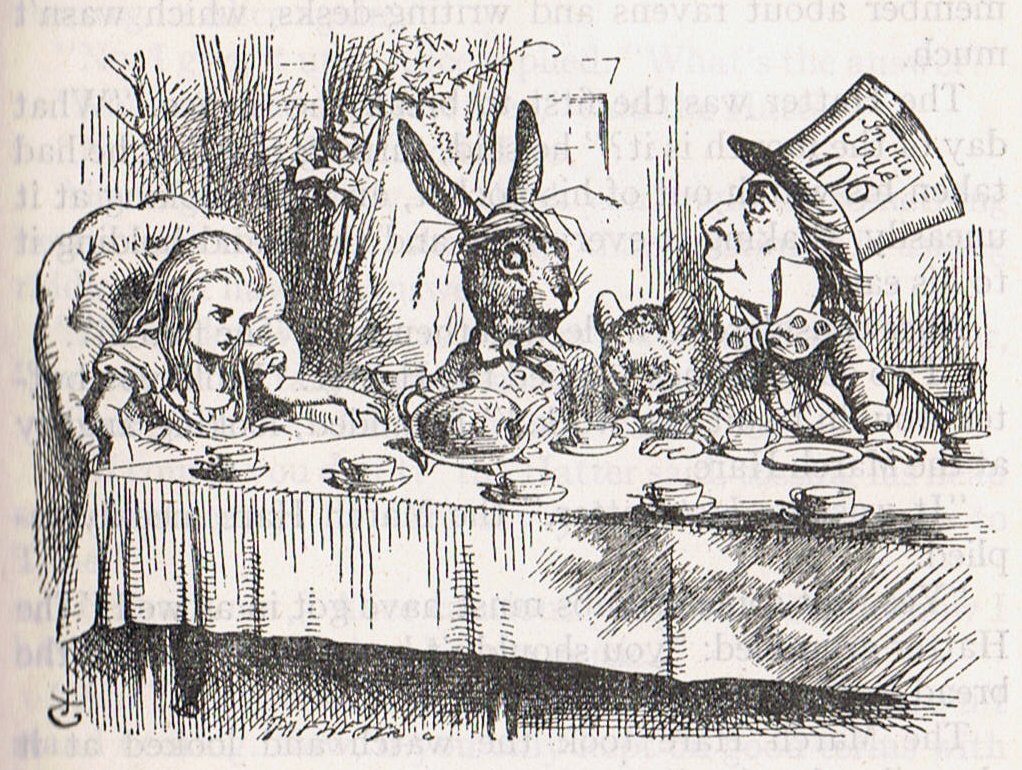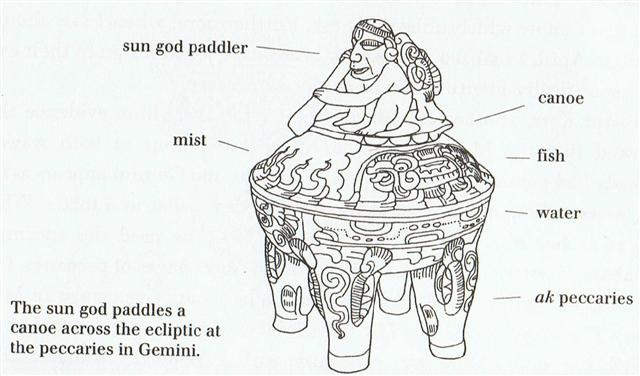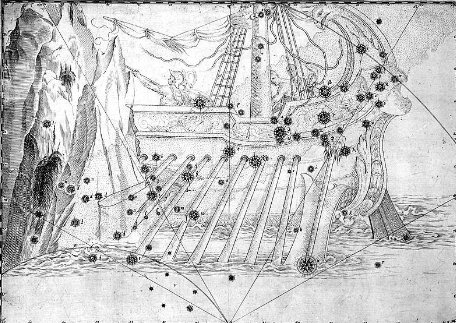Once upon a time the Milky Way had been oriented so that a ship could easily move across from autumn to spring.  But later this great dial in the night sky (Nile, Ganges) had fallen (been brought down) and the path became more like a tree:
Every night this spectacle was repeated for those who were awake and alert. ... Sagittarius is on the same side of the Milky Way as Gemini, with both constellations arriving just after the river. Time runs from left to right in the drawings of Hevelius. When Gemini rose with the Sun in July (the month beyond the solstice) Sagittarius could be observed close to the Full Moon. When Sagittarius was rising heliacally in January (the month beyond the other solstice) the Gemini twins were visible close to the Full Moon. In rongorongo times the solstice months (incorporating 6h respectively 18h) could be said to coincide with the Milky Way. The once (in Krita Yuga) level water surface (aqueduct) between 12h and 0h, between Sagittarius respectively Gemini, was no longer present, because the 'heavenly Ganga' had been brought down by Canopus, drinking up all its waters. Instead our galaxy was now standing up like a flowering great tree rising up from Gemini towards Sagittarius. According to the ancient sky map the region regarded as 'the Sea' came after Sagittarius and probably because a horse dwells on land and not in the sea the figure of Hevelius is reversed, facing backwards in time. Here there should not be any future for a horse, nothing to look forward to ...
... 'Tell us a story!' said the March Hare. 'Yes, please do!' pleaded Alice. 'And be quick about it', added the Hatter, 'or you'll be asleep again before it's done.' 'Once upon a time there were three little sisters', the Dormouse began in a great hurry: 'and their names were Elsie, Lacie, and Tillie; and they lived at the bottom of a well — ' 'What did they live on?' said Alice, who always took a great interest in questions of eating and drinking. 'They lived on treacle,' said the Dormouse, after thinking a minute or two. 'They couldn't have done that, you know', Alice gently remarked. 'They'd have been ill.' 'So they were', said the Dormouse; 'very ill'. Alice tried a little to fancy herself what such an extraordinary way of living would be like, but it puzzled her too much: so she went on: 'But why did they live at the bottom of a well?' 'Take some more tea [= t as in duration of time]', the March Hare said to Alice, very earnestly. 'I've had nothing yet', Alice replied in an offended tone: 'so I can't take more [<]'. 'You mean you can't take less [>]', said the Hatter: 'it's very easy to take more than nothing'. 'Nobody asked your opinion', said Alice. 'Who's making personal remarks now?' the Hatter remarked triumphantly. Alice did not quite know what to say to this: so she helped herself to some tea and bread-and-butter, and then turned to the Dormouse, and repeated her question. 'Why did they live at the bottom of a well?' The Dormouse again took a minute or two to think about it, and then said 'It was a treacle-well.' 'There's no such thing!' Alice was beginning very angrily, but the Hatter and the March Hare went 'Sh! Sh!' and the Dormouse sulkily remarked 'If you ca'n't be civil, you'd better finish the story for yourself.' 'No, please go on!' Alice said very humbly. 'I wo'n't interrupt you again. I dare say there may be one.' 'One, indeed!' said the Dormouse indignantly. However, he consented to go on. 'And so these three little sisters - they were learning to draw, you know —' 'What did they draw?' said Alice, quite forgetting her promise. 'Treacle', said the Dormouse, without considering at all, this time. 'I wan't a clean cup', interrupted the Hatter: 'let's all move one place on.' He moved as he spoke, and the Dormouse followed him: the March Hare moved into the Dormouse's place, and Alice rather unwillingly took the place of the March Hare. The Hatter was the only one who got any advantage from the change; and Alice was a good deal worse off than before, as the March Hare had just upsed the milk-jug into his plate ... The prow of the Mayan 'sky canoe' was evidently sinking below the surface of the sea and the Jaguar Paddler had quickly to turn around and sit down in its middle: 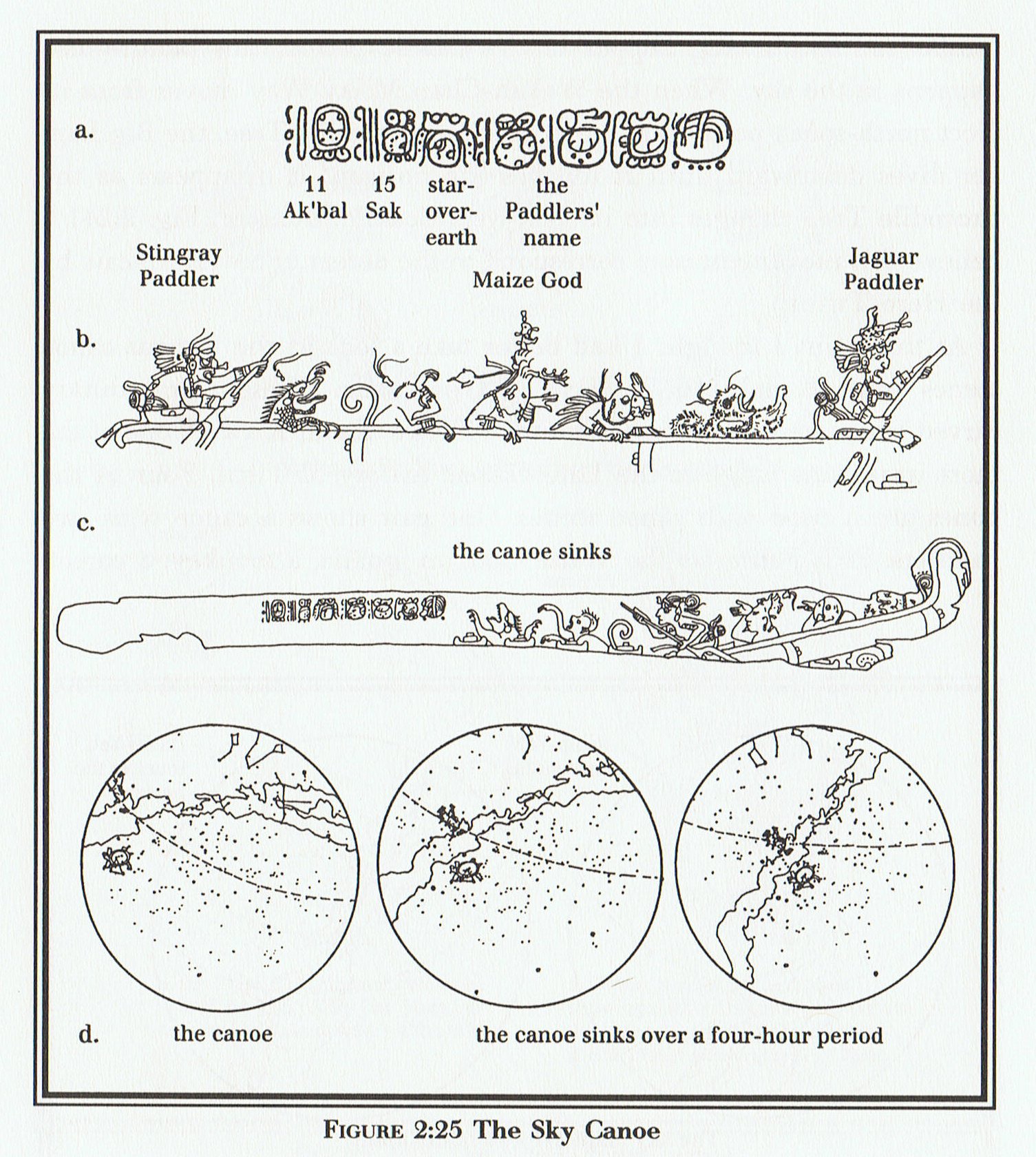 ... As I looked at the computer screen, everything clicked. Gemini had to be the copulating peccaries and Orion the turtle. The three stars on its back in the cartouche at Bonampak' were placed in the exact position of Orion's belt.
But more important, the Maize God [First Father] was reborn from the cracked carapace of a turtle, and we had a text that said that the first image of the turtle was seen at the Creation. The two anthropomorphic figures between the peccaries and the turtle had to be the personifications of Saturn and Mars. And we already knew many examples of other planets, such as Venus and Jupiter, that were represented by anthropomorphic figures. We seemed to have two more here. Not until much later did it hit me that August 6, the date of the zenith passage at Bonampak', was only seven days before the Creation day of August 13. Matt Looper provided the confirmation by calling my attention to a picture from the Madrid Codex, another of the four Maya books. It shows a turtle with a triangle of stones on its back. The turtle in the codex is shown suspended from cords tying it to the skyband because Orion hangs below the ecliptic. Clearly Orion was the turtle from which the Maize God rose in his resurrection.
The Milky Way above the turtle had to be the Maize God appearing in his tree form as he does on the Tablet of the Foliated Cross at Palenque. The image of the first turtle really is in the sky. The identification of Gemini as copulating peccaries made sense in another curious way. For years we have seen pots that have these odd modeled peccary heads as their feet. All of these pots have the sea painted or drawn on their bottoms and an extraordinary one in the Dallas Museum of Arts shows the sun god paddling a canoe across this sea.
I realized that this must be the sun riding the ecliptic across the Peccaries of Gemini ... Argo was caught by the clashing rocks at the equinox and the argonauts had to carry on without its ornament: ... The Ship appears to have no bow ... Aratos wrote: Sternforward Argō by the Great Dog's tail // Is drawn; for hers is not a usual course, // But backward turned she comes, as vessels do // When sailors have transposed the crooked stern // On entering harbour; all the ship reverse, // And gliding backward on the beach it grounds. // Sternforward thus is Jason's Argō drawn. This loss of its bow is said to have occurred ... when Argō pass'd // Through Bosporus betwixt the justling rocks - the Symplegades, the Cyanean (azure), or the Planctae Rocks at the mouth of the Euxine Sea. Yet Aratos may have thought it complete, for he wrote: All Argō stands aloft in sky // and Part moves dim and starless from the prow // Up to the mast, but the rest is bright; and it has often be so illustrated and described by artists and authors ...
|
